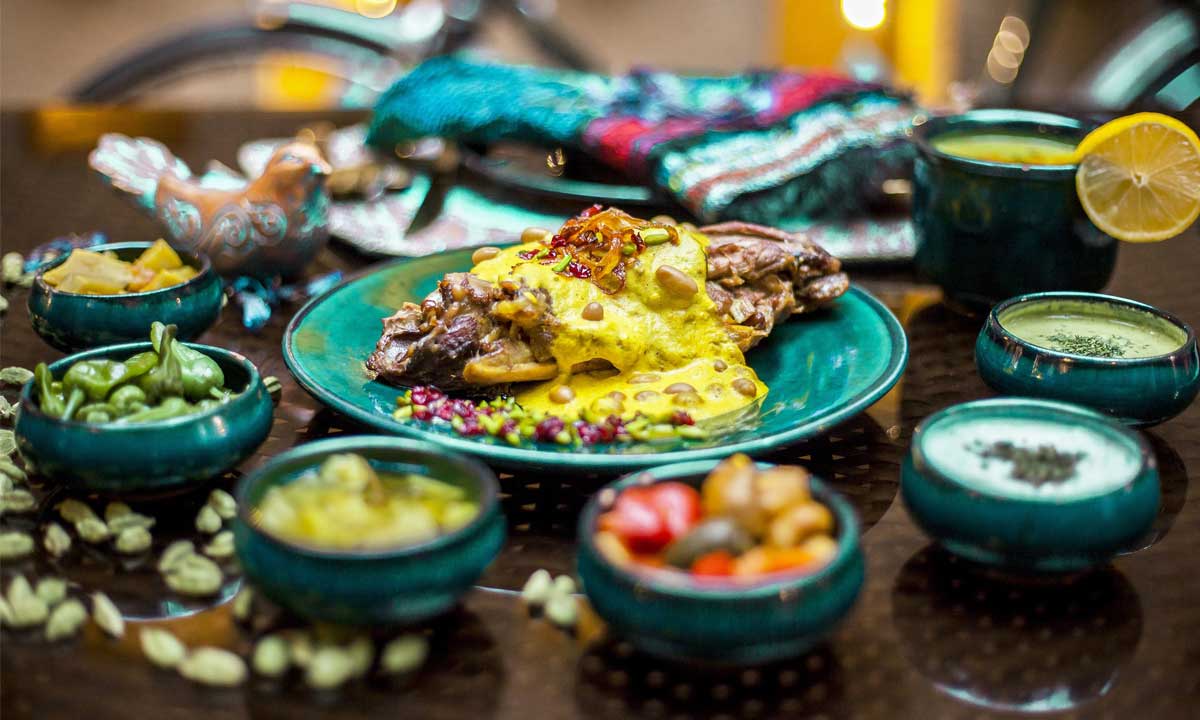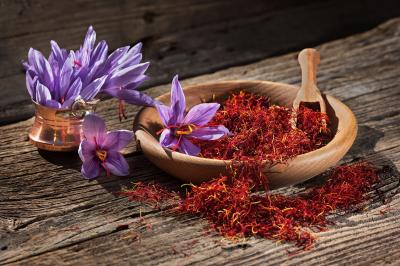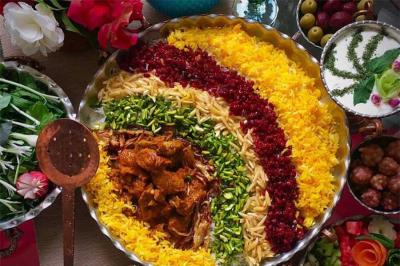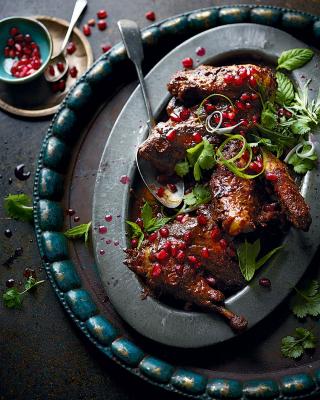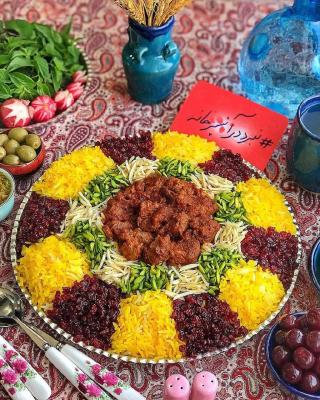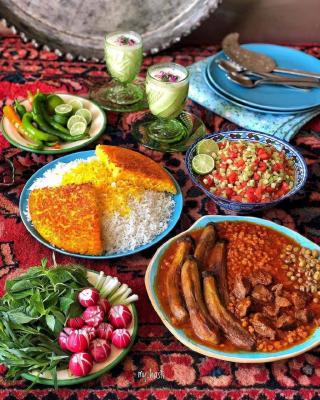Iran Cuisine (II) the third most well-known cooking style in the world!
As we mentioned in our other article, Iran cuisine(I), the concept of food culture is much more complicated than what you see on a plate. Food operates as an expression of cultural identity. Iran, with more than 2500 types of traditional food, is one of the richest countries in this regard. Persian cooking method is the third most well-known style in the world after Chinese and Roman cooking.
In Iran, food is believed to be a blessing from God, and disrespecting the food is equivalent to disrespecting the Creator. The dining table is revered as a place where family members spend three times a day interacting with each other. Food and tablecloths (in the old times people used to sit around tablecloth placed on the ground. Some still do) are highly valued in Iranian food culture, and eating alone is a form of disrespect to family members and a sign of poor family relationships. Iranians, at least in the Islamic period, have always laid the tablecloth on the ground and eaten with their hands. Even though it’s been more than three hundred years since Persian people have used cutlery, there are still some foods, especially in north and west of Iran, that are eaten traditionally with hands; like fish.
Culinary medicine
Iranian food diversity is high and ingredients with high nutritional value are used for cooking. In traditional Iranian culinary medicine, which is part of the Iranian food culture, all foods are naturally divided into four categories: wet, dry, warm, and cold. It is called gastric temperament, or Mizaj-e-Meda (Temperament of Stomach). Accordingly, Persians believe that they should find a balance in consuming various foods, for instance, Food with cold nature must be eaten in summer and food with warm nature in winter, Otherwise, people would get sick or so-called Su-e-Mizaj (abnormal temperament). To avoid that, Persian people use “Mosleh.”
What’s Mosleh?
Foods that balance each other's temperaments are called "Mosleh." In Iranian food culture, traditional foods have long been consumed by Mosleh. For example, yogurt and dairy products have cold nature, and when yogurt is consumed, mint is added to balance its nature. Rice is also cold in nature and vegetables such as mint, leek, tarragon, basil, etc. are warm in nature. Therefore, eating a basket of vegetables, which includes several different types of vegetables with a warm nature, is often seen on the table of Iranians and has become an integral part of Iranian food culture.
Persian’s eating utensils
In Iranian food culture, the Sofreh (tablecloth) is used instead of the dining table. Tablecloths are often made of “Kalamlari clothes” that are spread in the center of the rug, usually with a white cloth spread on it, then the food and other utensils such as plate, bowl, glass, pitcher, spoon, and fork are placed on it. Some foods are wrapped in bread, which is called “Loghmeh (morsel)”, and eaten by hands.
Some foods, such as Abgoosht (broth) and Ash (soup), are eaten without a fork and only with a spoon. Most meals are served on a plate. But soup, Ash, Khoresh (stews), and Abgoosht are served in relatively large bowls. The use of knives has no place on Iranian tables and food is cut after cooking only with a spoon and fork. Also cutting bread with a knife was not common until recently.
After preparing the meal, family members sit around the tablecloth and enjoy the main meals together. Over the past few years, the use of disposable plastic tablecloths has also become common. But in the past, cleaning the table after a meal was one of the eating habits in Iran and usually required special expertise! Because the tablecloths were not washed after every meal and a good cleaning was enough. The style and manner of cleaning the tablecloths were of special importance and showed the culture, cleanliness, and patience of the hosts. Today, due to lifestyle changes, the use of dining table has also become common; However, the use of tablecloths has maintained its place well in large family gatherings.
Unlike Western culture, where the three-course meal, appetizer, main course, and dessert, are brought to the table at regular intervals, in Iranian food culture a variety of foods are placed on the table at the same time. The main food, supplements, snacks, desserts, and drinks are placed on the table at once and people use them as needed.
In Iranian food culture, like many other Islamic societies, the use of certain foods is forbidden and has no place in traditional food customs. Pork and all its by-products are banned due to religious values. Also, all kinds of alcoholic beverages and drugs are prohibited in Iran and buying, selling, producing, and using them is a crime. Eating insects and raw seafood are also outside of Iranian food culture.
Beverages in Persian culture
Drinks are usually either very hot or very cold. Tea is the most popular hot drink in Iran and an inseparable part of food culture which is mostly cultivated in the north of Iran. Coffee is also common in some southern regions. Iranian black tea is brewed in certain ways and traditionally, natural flavors such as rose petals, orange blossom, cinnamon wood, and cardamom are used to make it fragrant. Tea is almost always served with traditional sweets. Qand or Ghand (sugar cubes) are also the most available and desirable side for tea. A variety of cold drinks are also used along with food mostly in the spring and summer. Doogh (cold savory yogurt-based beverage) and cold water are always present on Iranian tables though nowadays Coca, Pepsi, and other non-alcoholic beverages have become common in the country. Different herbal teas are also used for the therapeutic aspect or to relieve fatigue.
Sharbat (homemade cold sweet beverage) used by Iranians vary depending on the different seasons and ingredients available. In summer, for instance, lemon juice combined with water, sugar, and sometimes mint is used to cool the body and quench thirst.
If you enjoyed this article, stay with us and read part three of this sequence. Don’t forget to check out YaldaMedTour-foods for more.
Iran Cuisine (II) - the third most well-known cooking style in the world! Iran Cuisine (II) - the third most well-known cooking style in the world!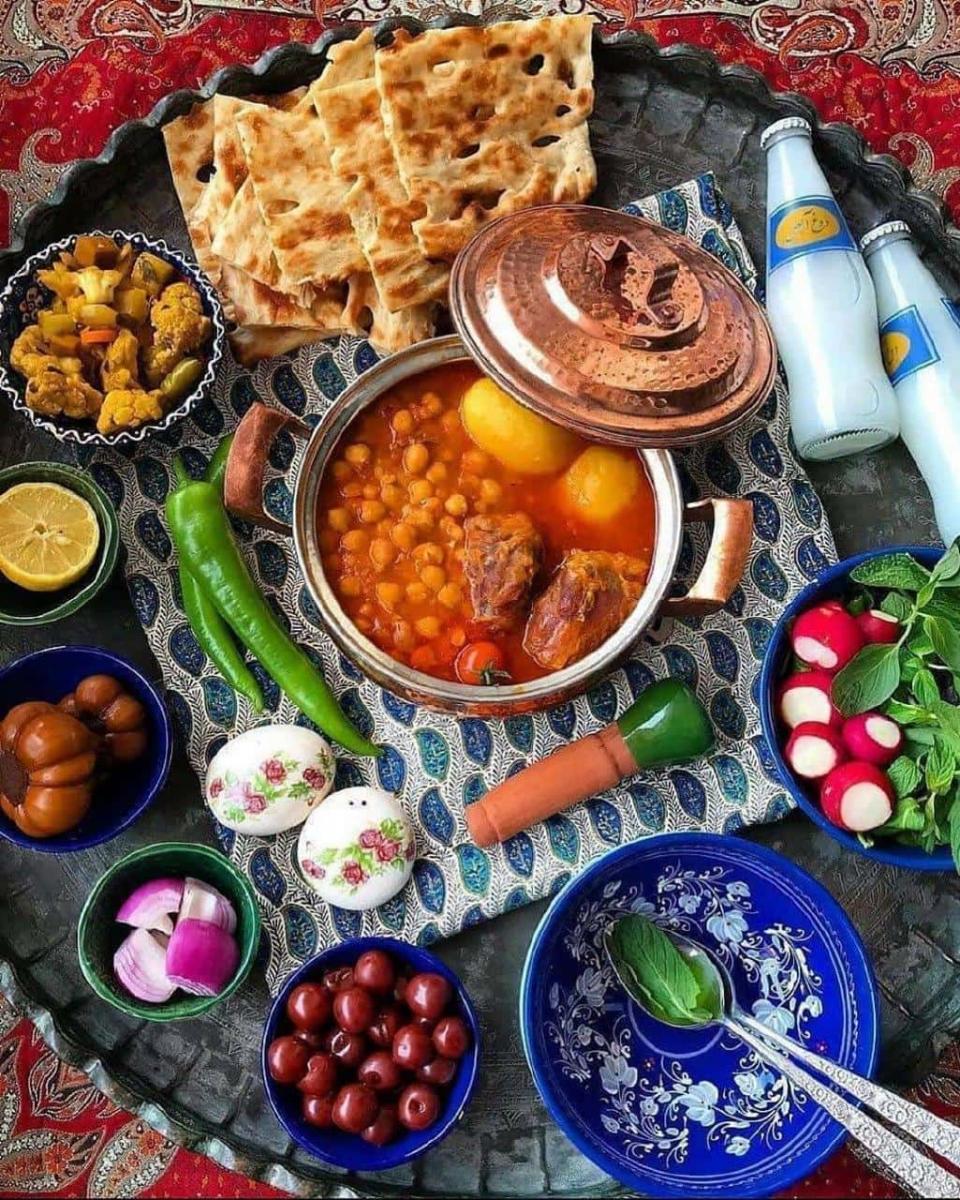 2020-08-30 08:45:26+3:30
2022-05-09 15:41:54+3:30
In Iran, food is believed to be a blessing from God, and disrespecting the food is equivalent to disrespecting the Creator. The dining table is revered as a place where family members spend three times a day interacting with each other. Food and tablecloths (in the old times people used to sit around tablecloth placed on the ground. Some still do) are highly valued in Iranian food culture, and eating alone is a form of disrespect to family members and a sign of poor family relationships.
Persian Cuisine,
Persian Food,
Persian Cooking,
Iranian Food,
Iranian Cuisine,
Iranian Cooking,
2020-08-30 08:45:26+3:30
2022-05-09 15:41:54+3:30
In Iran, food is believed to be a blessing from God, and disrespecting the food is equivalent to disrespecting the Creator. The dining table is revered as a place where family members spend three times a day interacting with each other. Food and tablecloths (in the old times people used to sit around tablecloth placed on the ground. Some still do) are highly valued in Iranian food culture, and eating alone is a form of disrespect to family members and a sign of poor family relationships.
Persian Cuisine,
Persian Food,
Persian Cooking,
Iranian Food,
Iranian Cuisine,
Iranian Cooking,
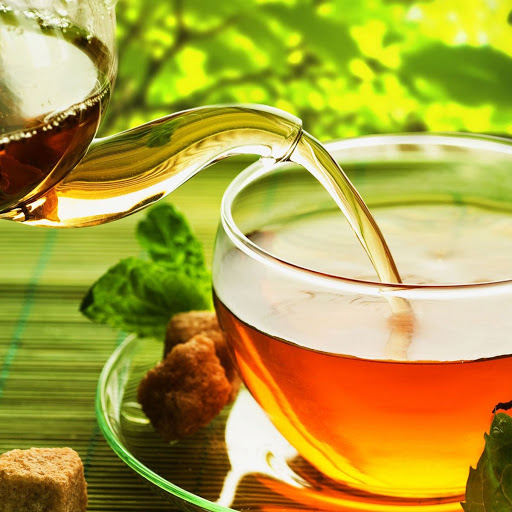
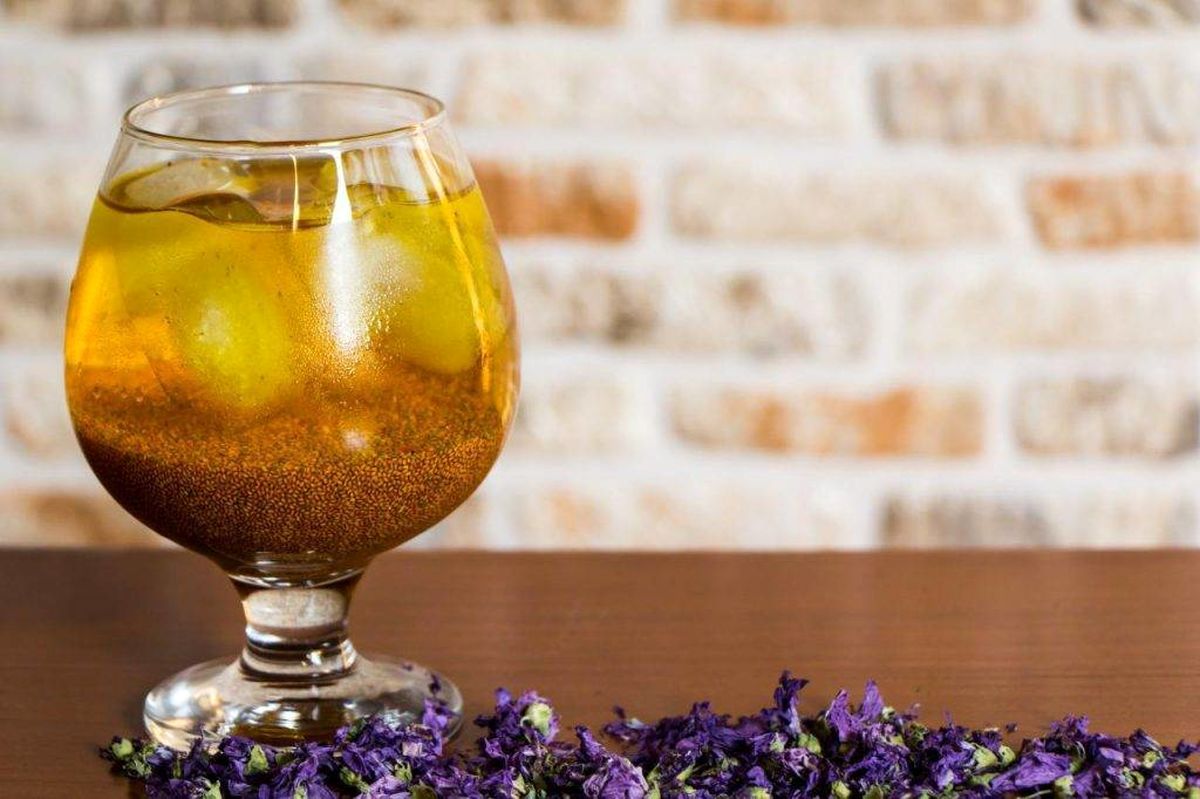
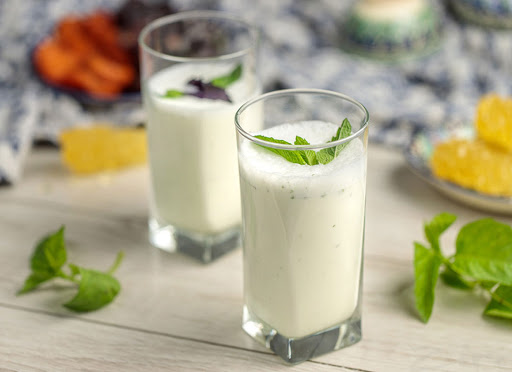 eyJpdiI6IkNZOXdKSy9USm5QL3JRYXBVWGVXSFE9PSIsInZhbHVlIjoiNnNHNElyT0czZEFuMGJLSUNlSHZ5QT09IiwibWFjIjoiMWYzY2Q4ZjM1ODYyNWM3YWNmMTIyMzE4YTNhNGY3NGYwZjU2MGUzYTQxYzVmY2ExNjVjMmE1ZDYzODZkZGY4MiIsInRhZyI6IiJ9 eyJpdiI6ImNSSW5pZ0I5VHlJc3A3U09VWFRZTWc9PSIsInZhbHVlIjoiM05NMUZtV0NQenFsOHFNWFRKUTJ0QT09IiwibWFjIjoiZTllZGE4NjhiY2YzNjEzYTI1MmIyY2RkZjEyNzI5NjdiZGQ3YzEzOTY5ZDk2NDZkZWZjNzk4YzI2N2M0MzdkNyIsInRhZyI6IiJ9
Author
info@yaldamedtour.com
/en/user-profile/10233
YaldaMedTour
Barajin Salamat Road
+98
Qazvin
Qazvin, Qazvin Province, Iran.
,
info@yaldamedtour.com
eyJpdiI6IkNZOXdKSy9USm5QL3JRYXBVWGVXSFE9PSIsInZhbHVlIjoiNnNHNElyT0czZEFuMGJLSUNlSHZ5QT09IiwibWFjIjoiMWYzY2Q4ZjM1ODYyNWM3YWNmMTIyMzE4YTNhNGY3NGYwZjU2MGUzYTQxYzVmY2ExNjVjMmE1ZDYzODZkZGY4MiIsInRhZyI6IiJ9 eyJpdiI6ImNSSW5pZ0I5VHlJc3A3U09VWFRZTWc9PSIsInZhbHVlIjoiM05NMUZtV0NQenFsOHFNWFRKUTJ0QT09IiwibWFjIjoiZTllZGE4NjhiY2YzNjEzYTI1MmIyY2RkZjEyNzI5NjdiZGQ3YzEzOTY5ZDk2NDZkZWZjNzk4YzI2N2M0MzdkNyIsInRhZyI6IiJ9
Author
info@yaldamedtour.com
/en/user-profile/10233
YaldaMedTour
Barajin Salamat Road
+98
Qazvin
Qazvin, Qazvin Province, Iran.
,
info@yaldamedtour.com
Keywords: Persian Cuisine, Persian Food, Persian Cooking, Iranian Food, Iranian Cuisine, Iranian Cooking,
Copyright © 2025 To YaldaMedTour. All Rights Reserved.
![]()



